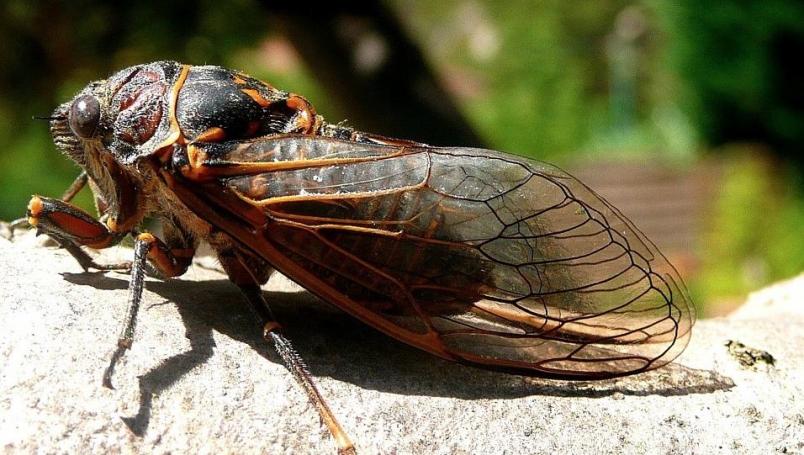The last time there were **records of cicadas** emerging from the ground in streets and forests in the **United States** was in 2008.
Now, about 17 years later, this species of insect **reappeared in the southern part of the country**. This is known as Brood XIV.
This is how “periodical” cicadas are
Reports from the participatory scientific app “Cicada Safari” show that the first insects of that generation, which **emerge from the ground every 17 years**, have started to come out.
As the ground temperature rises towards the north, it is expected that **millions more will appear**.
These animals with dark bodies and yellowish wings belong to the order of **hemiptera, along with bed bugs**, mattress mites, and aphids.
 The “periodical” cicadas.
The “periodical” cicadas.
However, they are often confused with **locusts**, an error that dates back to the early English settlers in the United States who compared their massive and **noisy appearance to biblical plagues**.
There are approximately **3500 species of cicadas worldwide**, many of them still unnamed.
Only in the United States
What is interesting about this species is that periodical cicadas, which depending on their brood emerge en masse **after 13 or 17 years**, are exclusive to the eastern United States.
Although there are also two additional unrelated species in the northeast of India and Fiji, as specified by **Chris Simon**, an expert on these insects from the **University of Connecticut**.
This XIV generation was first documented in 1634. “Everyone is fascinated by them because nothing is seen for 13 or 17 years, and suddenly, your house and car are covered with these insects,” explained Simon to the **AFP** agency.
 Cicadas in the United States.
Cicadas in the United States.
These **insects spark enthusiasm especially among scientists**, who are still trying to decipher the evolutionary logic behind their life cycles involving prime numbers.
Cicadas are often dubbed “**creatures of history**” as they evoke memories of past life moments.
How cicadas live
These insects spend **almost their entire life underground**. They then dig tunnels to the surface during **a few weeks to molt, reproduce**, and die, while their newly born offspring fall from the trees and bury themselves in the ground.
The males produce their **deafening mating songs** with their “tymbals.” These are sound membranes located on the sides of the abdomen.
**They do not sting or bite**, and in their adult form, they do not eat solid food, although they drink water. Their defense is their **overwhelming numbers: they gather in such a large number** that they satiate predators like birds, raccoons, foxes, and turtles, playing a crucial role in the ecosystem.
**Generalized deforestation** and urbanization destroyed their habitat. And now, climate change has led to a higher frequency of “stragglers,” cicadas that emerge four years earlier or later than usual.

